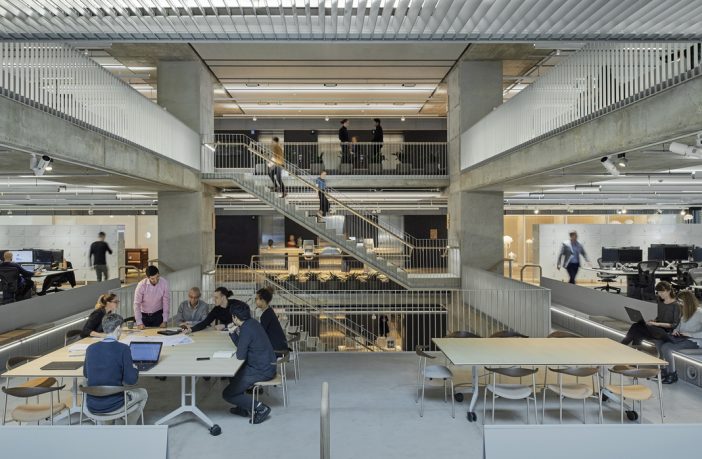- If your profession involves going into the office every day, then you’re probably familiar with this age-old question- is the office too hot, or is it too cold?
- While some colleagues may claim that the workplace feels like a sauna, you might see others who survive the daily grind hidden away under a blanket with a personal space heater keeping them company.
The never-ending debate about the perfect temperature might only scratch the surface of many questions that designers and engineers have aimed to solve about the workplace, and they’re probably the aspects that you don’t consider on a daily basis. What about lighting – has a meeting room ever felt too bright, or too dimly lit that you felt uncomfortable?
When you think of the interior design of workplaces, the obvious elements come to mind- layout, furniture, finishes, and any other aspect that contributes to the overall experience. As much as all of that is important, workplace conditions and trends continue to rapidly evolve, and oftentimes, temperature and lighting are two aspects of design that tend to be overlooked.
In 2015, a survey discovered that 42% of workers in the United States think that their workplace is too warm, while 56% think it’s too cold. Although modern technology and thermostats allow us to control temperature at the click of a button, the problem is that we now cant decide which temperature it should be. The industry standard as to what is considered a desirable temperature has to do with thermal comfort, and how we define that. ASHRAE Standard 55, which is widely used in building codes even nearly 50 years after it was created, is a mathematical model that considers air temperature, humidity, activity level, and clothing insulation. The result is calibrated to the average size man in a suit, and how that might be comfortable for him. The obvious problem is that we’re not all men, and we don’t all wear suits. With an array of dress codes and large numbers of women in the workforce, this standard has left many people out in the cold.

Almost as important as it is to feel comfortable from a temperature standpoint, artificial lighting has the ability to make or break a successful workday. A study from the American Society of Interior Design shows that more than 65% of workers complain about the lighting in their office. This is critical,l because lighting in the workplace has a significant impact on productivity and our physical and psychological health. While some lights, like the blue light that emits from the screens we stare at all day, tend to be too harsh and straining, other types of light activate our body’s circadian rhythm, telling us when it’s time to sleep, or even wake up, causing us to feel an imbalance with our required work routines. Some types of lights are designed to feel more “warm” or “cool” in tone, have the ability to give us a quick energy boost and improve our overall moods.

So what does the future hold, and will we ever stop the fight over the office thermostat or light switch? The good news is yes. As new research emerges that focuses on how design impacts behavior, happiness, and productivity, the workplace is becoming almost as much of a scientific experiment as it is a study in aesthetics. New technology is also improving HVAC systems to create more comfortable thermal environments, and allowing individuals to create more customized temperatures in specific locations. Lighting design has become more popular than ever, as industry professionals have redesigned workplaces to incorporate a healthy mix of natural and artificial light to create a welcoming and stimulating environment
Author: Kaley Overstreet
















